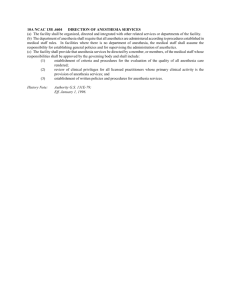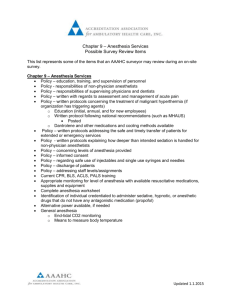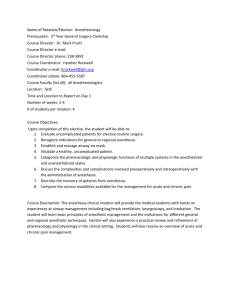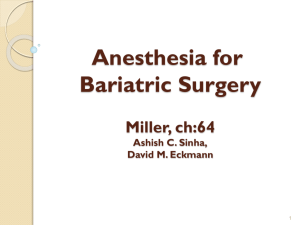Obesity outline
advertisement
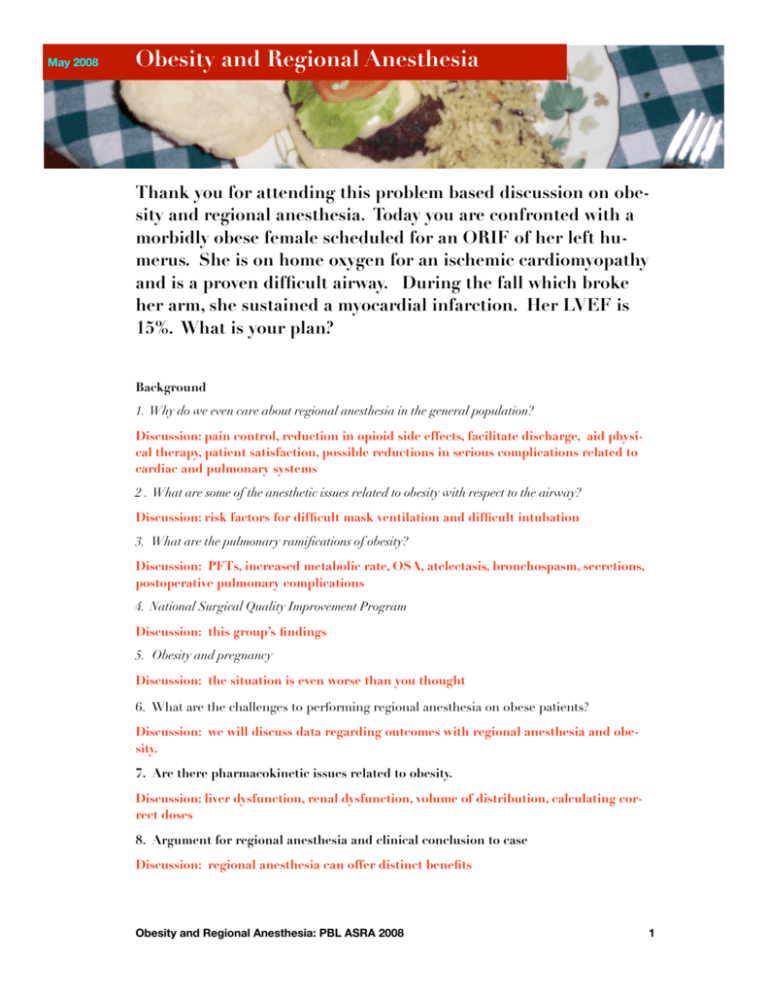
May 2008 Obesity and Regional Anesthesia Thank you for attending this problem based discussion on obesity and regional anesthesia. Today you are confronted with a morbidly obese female scheduled for an ORIF of her left humerus. She is on home oxygen for an ischemic cardiomyopathy and is a proven difficult airway. During the fall which broke her arm, she sustained a myocardial infarction. Her LVEF is 15%. What is your plan? Background 1. Why do we even care about regional anesthesia in the general population? Discussion: pain control, reduction in opioid side effects, facilitate discharge, aid physical therapy, patient satisfaction, possible reductions in serious complications related to cardiac and pulmonary systems 2 . What are some of the anesthetic issues related to obesity with respect to the airway? Discussion: risk factors for difficult mask ventilation and difficult intubation 3. What are the pulmonary ramifications of obesity? Discussion: PFTs, increased metabolic rate, OSA, atelectasis, bronchospasm, secretions, postoperative pulmonary complications 4. National Surgical Quality Improvement Program Discussion: this group’s findings 5. Obesity and pregnancy Discussion: the situation is even worse than you thought 6. What are the challenges to performing regional anesthesia on obese patients? Discussion: we will discuss data regarding outcomes with regional anesthesia and obesity. 7. Are there pharmacokinetic issues related to obesity. Discussion: liver dysfunction, renal dysfunction, volume of distribution, calculating correct doses 8. Argument for regional anesthesia and clinical conclusion to case Discussion: regional anesthesia can offer distinct benefits Obesity and Regional Anesthesia: PBL ASRA 2008 1





